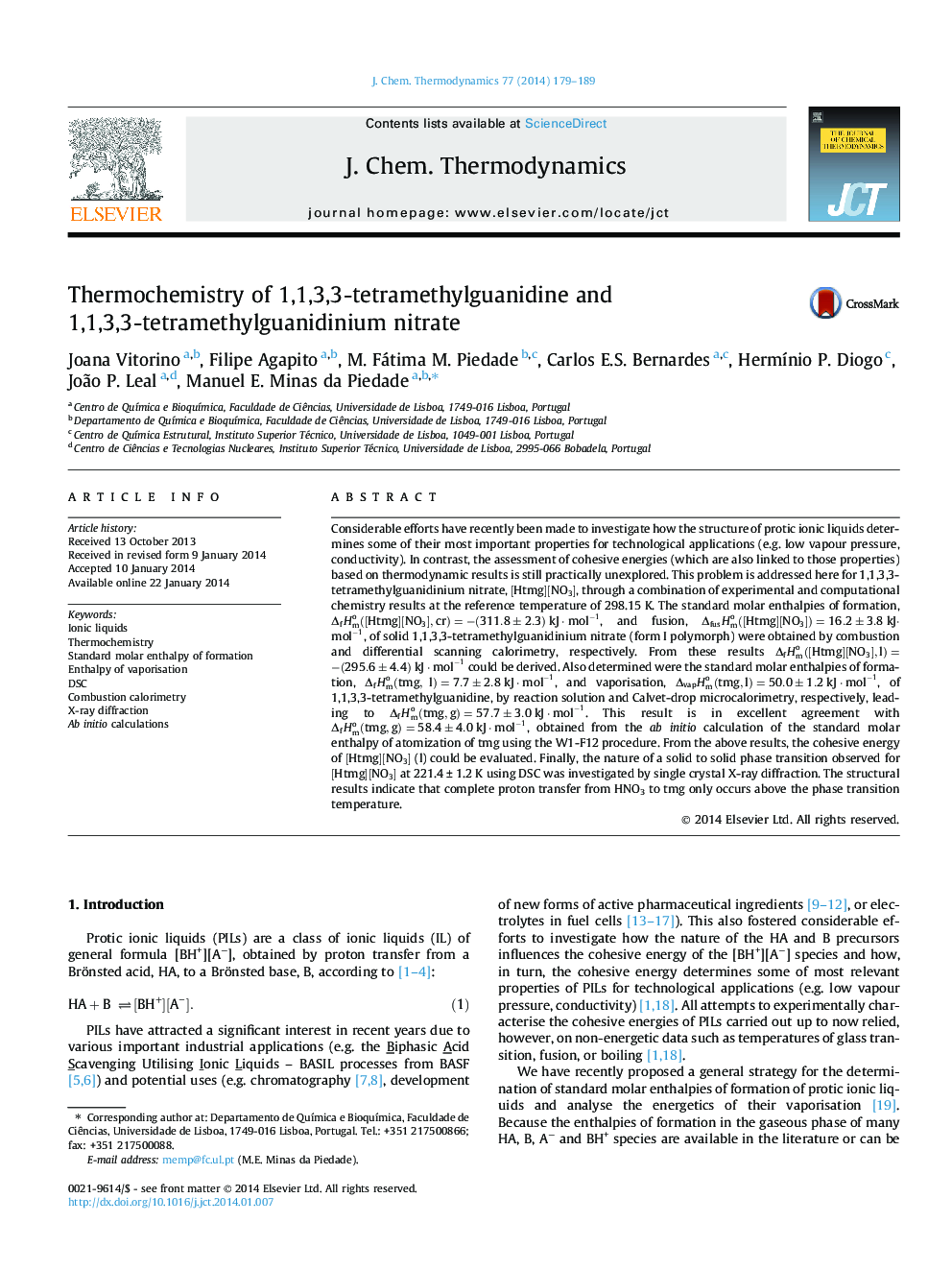| کد مقاله | کد نشریه | سال انتشار | مقاله انگلیسی | نسخه تمام متن |
|---|---|---|---|---|
| 215311 | 1426236 | 2014 | 11 صفحه PDF | دانلود رایگان |
• The enthalpy of formation of 1,1,3,3-tetramethylguanidinium nitrate was determined by combustion calorimetry.
• The cohesive energy of liquid 1,1,3,3-tetramethylguanidinium nitrate was evaluated.
• The crystal structure of 1,1,3,3-tetramethylguanidinium nitrate was determined by single crystal X-ray diffraction.
• ΔfHmo (l/g) of 1,1,3,3-tetramethylguanidine (tmg) were obtained by solution and Calvet calorimetry.
• ΔfHmo (g) calculated by the W1-F12 procedure was in excellent agreement with the corresponding experimental value.
Considerable efforts have recently been made to investigate how the structure of protic ionic liquids determines some of their most important properties for technological applications (e.g. low vapour pressure, conductivity). In contrast, the assessment of cohesive energies (which are also linked to those properties) based on thermodynamic results is still practically unexplored. This problem is addressed here for 1,1,3,3-tetramethylguanidinium nitrate, [Htmg][NO3][Htmg][NO3], through a combination of experimental and computational chemistry results at the reference temperature of 298.15 K. The standard molar enthalpies of formation, ΔfHmo([Htmg][NO3],cr)=-(311.8±2.3)kJ·mol-1, and fusion, ΔfusHmo([Htmg][NO3])=16.2±3.8kJ·mol-1, of solid 1,1,3,3-tetramethylguanidinium nitrate (form I polymorph) were obtained by combustion and differential scanning calorimetry, respectively. From these results ΔfHmo([Htmg][NO3],l)=-(295.6±4.4)kJ·mol-1 could be derived. Also determined were the standard molar enthalpies of formation, ΔfHmo(tmg, l)=7.7±2.8kJ·mol-1, and vaporisation, ΔvapHmo(tmg,l)=50.0±1.2kJ·mol-1, of 1,1,3,3-tetramethylguanidine, by reaction solution and Calvet-drop microcalorimetry, respectively, leading to ΔfHmo(tmg,g)=57.7±3.0kJ·mol-1. This result is in excellent agreement with ΔfHmo(tmg,g)=58.4±4.0kJ·mol-1, obtained from the ab initio calculation of the standard molar enthalpy of atomization of tmg using the W1-F12 procedure. From the above results, the cohesive energy of [Htmg][NO3][Htmg][NO3] (l) could be evaluated. Finally, the nature of a solid to solid phase transition observed for [Htmg][NO3][Htmg][NO3] at 221.4 ± 1.2 K using DSC was investigated by single crystal X-ray diffraction. The structural results indicate that complete proton transfer from HNO3 to tmg only occurs above the phase transition temperature.
Figure optionsDownload as PowerPoint slide
Journal: The Journal of Chemical Thermodynamics - Volume 77, October 2014, Pages 179–189
